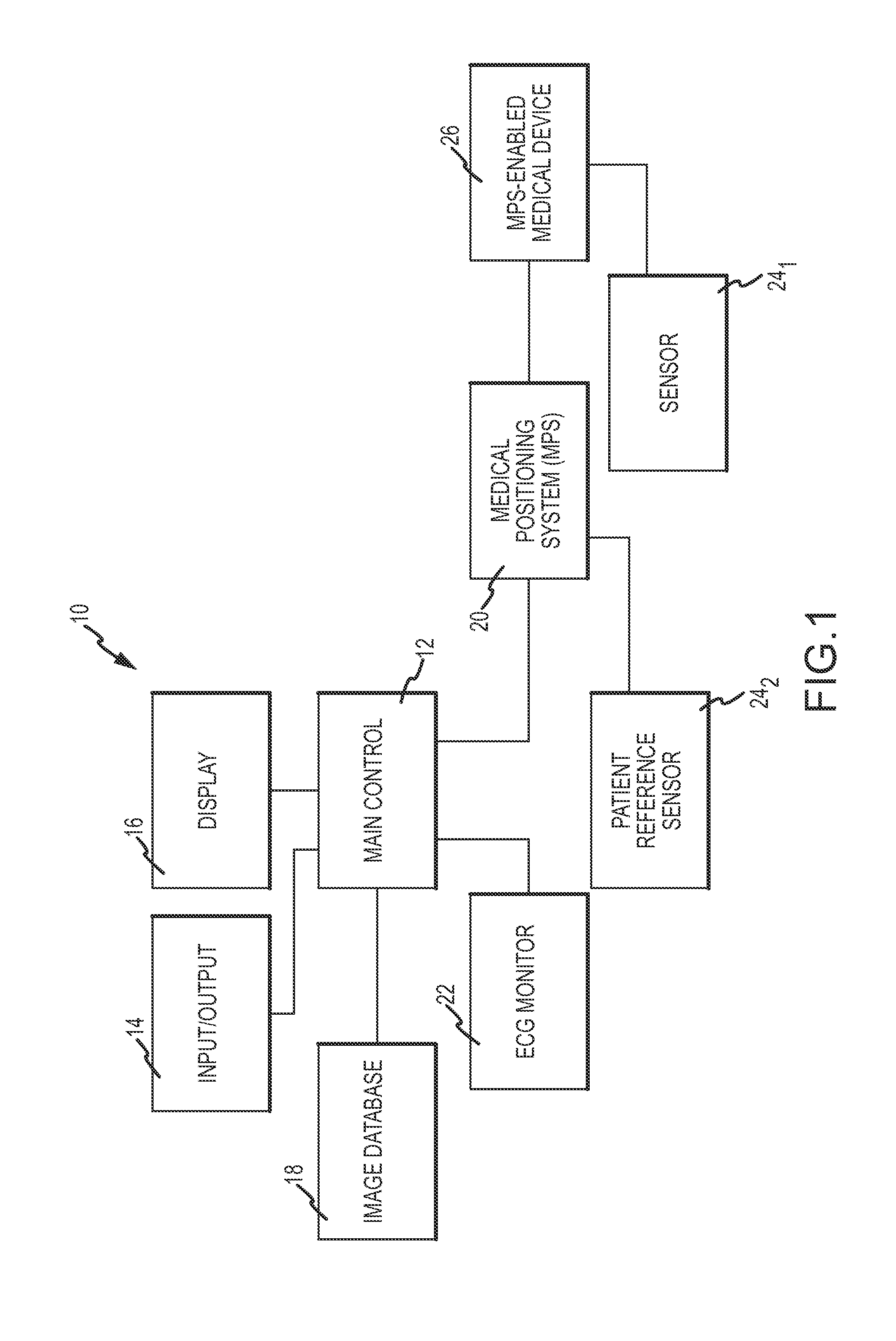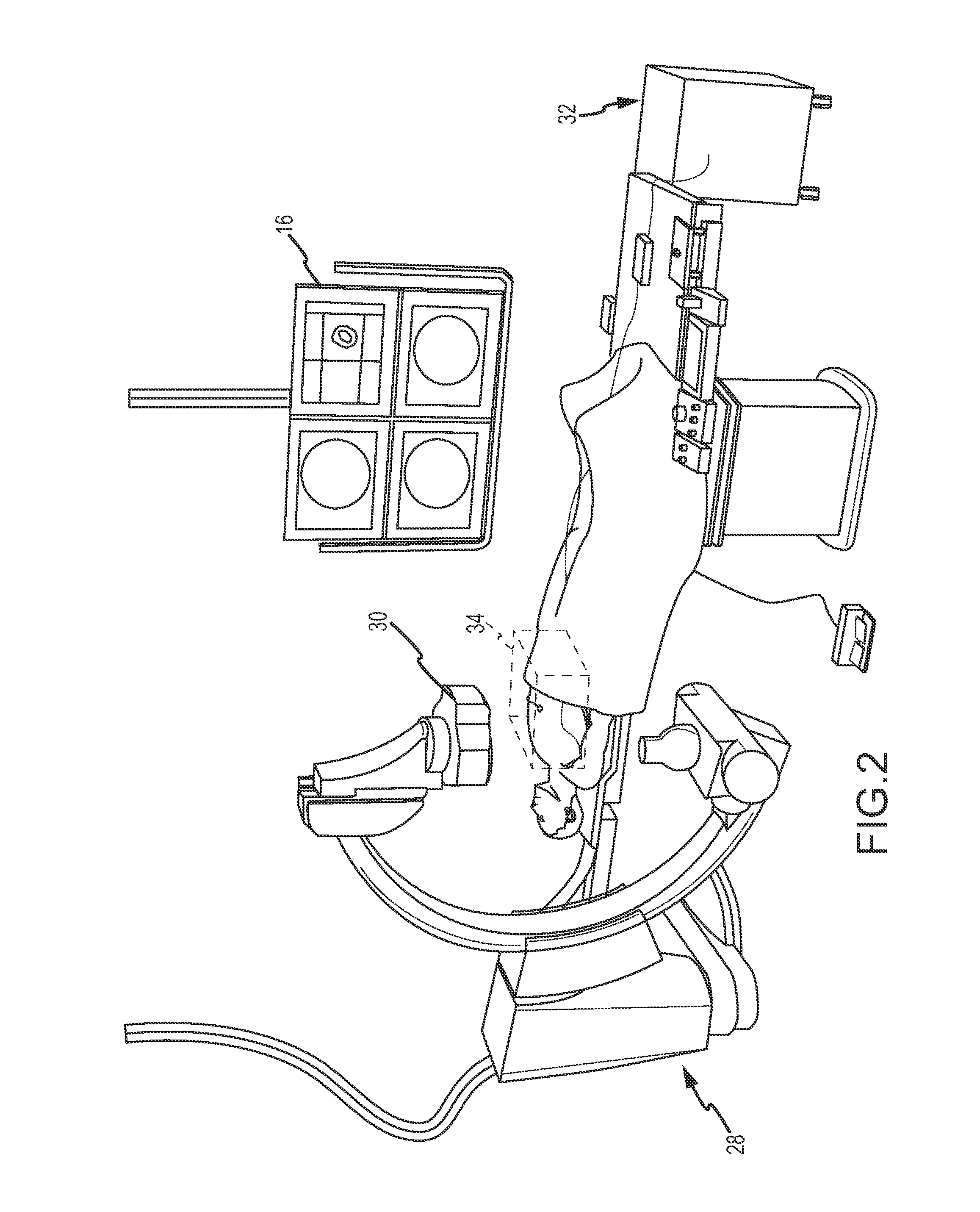Method of assembling a positioning sensor and associated wiring on a medical tool
a technology of positioning sensor and associated wiring, which is applied in the direction of diagnostic recording/measuring, applications, catheters, etc., to achieve the effect of reducing stress
- Summary
- Abstract
- Description
- Claims
- Application Information
AI Technical Summary
Benefits of technology
Problems solved by technology
Method used
Image
Examples
third embodiment
[0046]FIG. 9 is an isometric view of an unfinished third embodiment of the medical device, designated device 26c (shown finished in FIG. 12c), at a stage of construction equivalent to that shown in FIG. 7. Rather than by using longitudinally-extending element 46 in the manufacturing process to provide a wire path or conduit, as described above, device 26c is constructed by winding one or more wires 50 directly on braid layer 44 and coupling one or more wires 50 to sensor 241. In FIG. 9, one or more wires 50 may comprise a twisted-pair cable, which may be, as shown, wound helically about braid layer 44. It should be understood that variations are possible, and that other wiring configurations (e.g., those described above) may be used.
[0047]FIG. 10 is a cross-sectional view of device 26 before reflow, taken substantially along line 10-10 in FIG. 8 (or taken at a point just proximal of sensor 241 in FIG. 9). Inner liner 42 is wrapped around mandrel 36, and braid layer 44 is wrapped aro...
second embodiment
[0051]FIG. 12b illustrates device 26b. In the second embodiment, longitudinally-extending element 46 is a pin or other elongate member, which may be coated with PTFE or another lubricant configured to facilitate removal of the pin (or member) after reflow. The pin is removed from jacket 48 after the reflow process, preferably taken or drawn from proximal end 40 of the device. A longitudinally-extending (i.e., substantially parallel with axis “A”) wiring lumen 56 remains in jacket 48 after the pin is removed, through which one or more wires 50 may be provided for coupling to sensor 241. As in device 26a, free ends 451, 452 of coil sensor 241 in device 26b are electrically connected to wiring 50 (e.g., TP cable). The wiring 50 / sensor 241 connection is then embedded in the surface of outer layer 48 and is otherwise suitably finished. The inner wall of wiring lumen 56 comprises the material of jacket 48.
[0052]FIG. 12c illustrates device 26c, previously shown in FIG. 9. One or more wires...
fourth embodiment
[0055]FIG. 13 is an isometric view of an MPS-enabled elongate medical device, designated device 26d. Inner liner 42 and braid layer 44 are substantially the same as in the first three embodiments, devices 26a, 26b and 26c. Jacket 48 has been altered relative to the other three embodiments to have an outer surface 58 with a circumferentially-extending sensor groove 60 and a longitudinally-extending wire groove 62. Sensor 241 is disposed in sensor groove 60, and one or more wires 50 are disposed in wire groove 62. Wiring 50 is electrically coupled to sensor 241. In FIG. 13, sensor 241 is a coil sensor. Sensor groove 60, and therefore sensor 241, may be placed on any part of device 26d where a P&O may be desired or required for purposes known in the art (e.g., navigation or mapping).
[0056]Device 26d may be manufactured by a method similar to the method used for the first three embodiments—devices 26a, 26b and 26c. Inner liner 42, braid layer 44, and outer layer 48 may all be placed on ...
PUM
| Property | Measurement | Unit |
|---|---|---|
| inner diameter | aaaaa | aaaaa |
| thickness | aaaaa | aaaaa |
| thickness | aaaaa | aaaaa |
Abstract
Description
Claims
Application Information
 Login to View More
Login to View More - Generate Ideas
- Intellectual Property
- Life Sciences
- Materials
- Tech Scout
- Unparalleled Data Quality
- Higher Quality Content
- 60% Fewer Hallucinations
Browse by: Latest US Patents, China's latest patents, Technical Efficacy Thesaurus, Application Domain, Technology Topic, Popular Technical Reports.
© 2025 PatSnap. All rights reserved.Legal|Privacy policy|Modern Slavery Act Transparency Statement|Sitemap|About US| Contact US: help@patsnap.com



